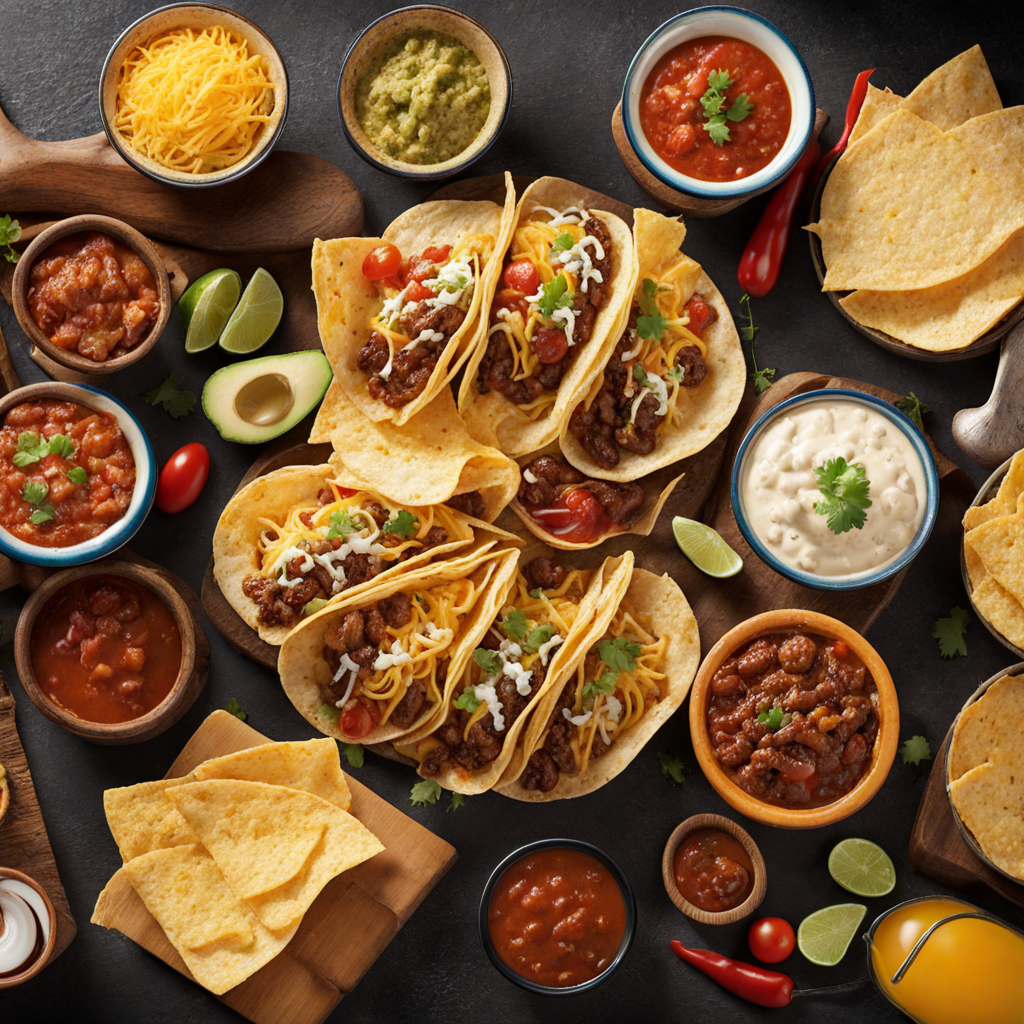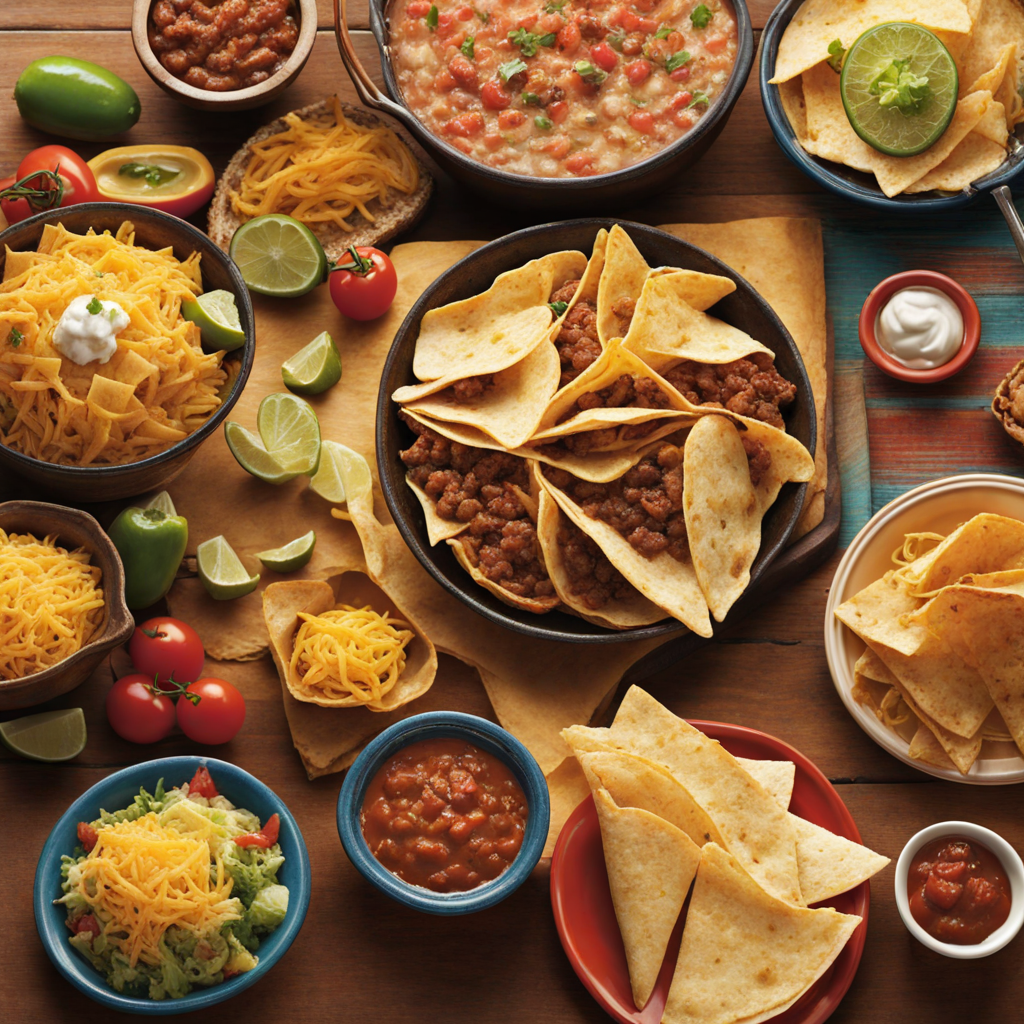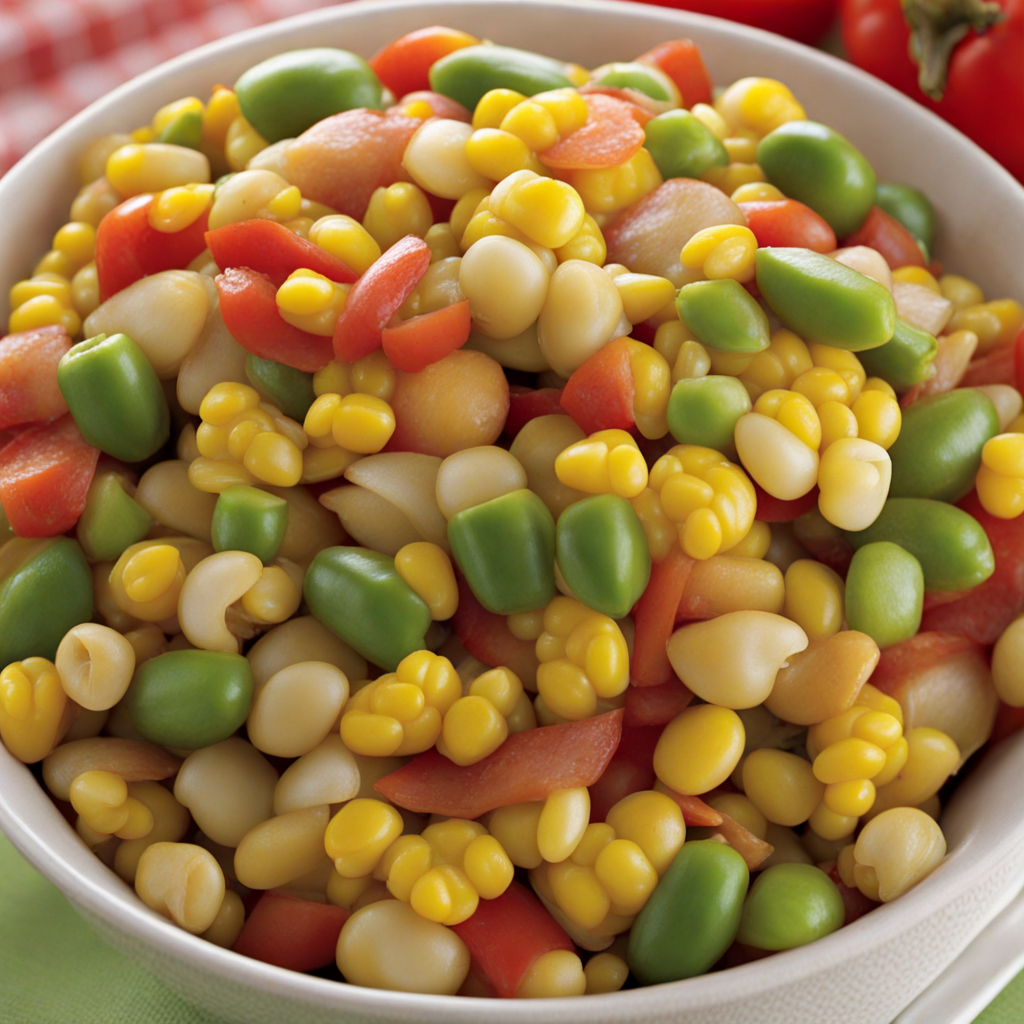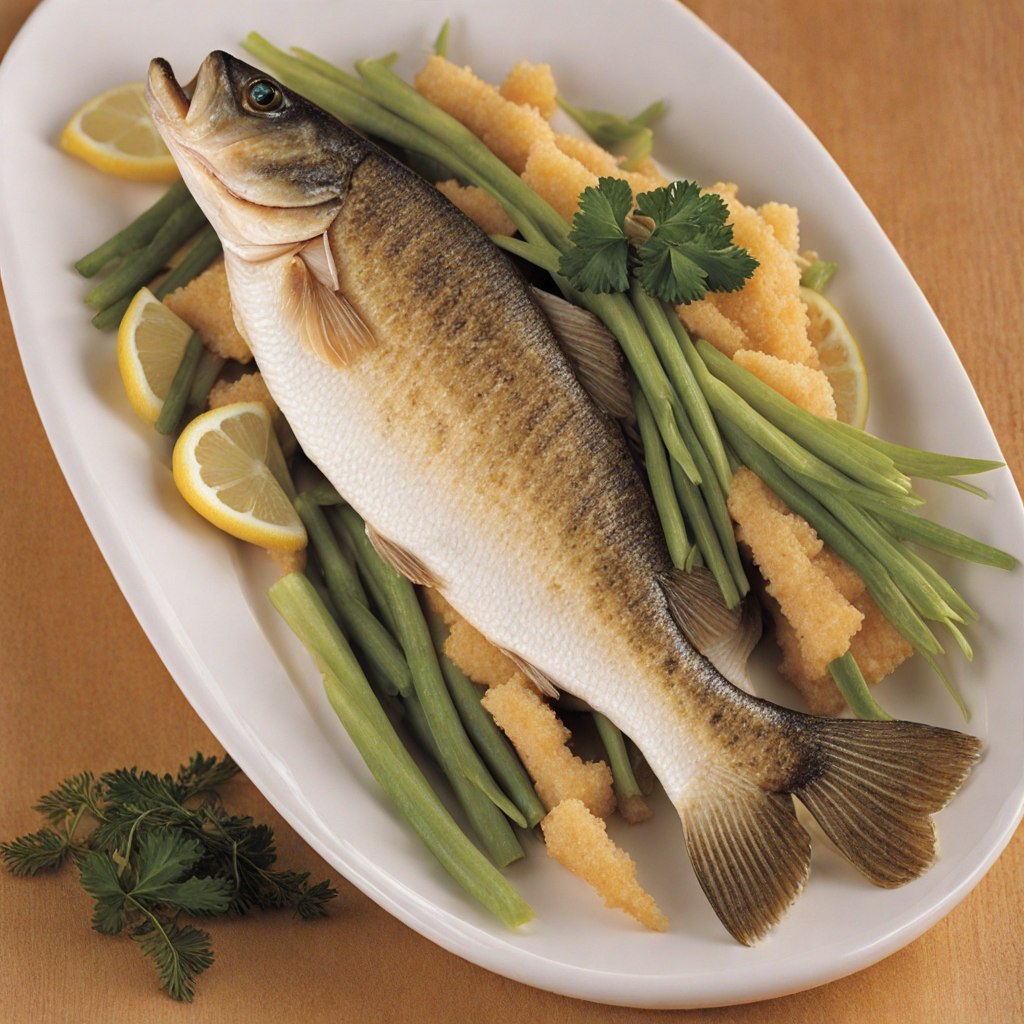Tex-Mex
Tex-Mex cuisine is a vibrant fusion of Texan and Mexican culinary traditions, characterized by its bold flavors and hearty ingredients. The foundation of Tex-Mex dishes often includes staples like corn, beans, and peppers, combined with proteins such as beef, chicken, or pork. One of the most iconic dishes is the enchilada, where corn tortillas are stuffed with meats or cheese, rolled up, and smothered in a rich chili sauce. Tacos, another beloved staple, can be filled with a variety of ingredients, from spicy barbacoa to grilled shrimp, and are typically garnished with fresh cilantro, onions, and a squeeze of lime. The use of cheese is a hallmark of Tex-Mex cuisine, with cheddar and Monterey Jack being the most popular choices. Queso, a creamy cheese dip often made with melted cheese and green chilies, is a favorite appetizer that pairs perfectly with tortilla chips. Additionally, Tex-Mex meals frequently feature sides like Mexican rice, refried beans, and guacamole, which enhance the overall dining experience. The cuisine is not just about the food; it also embodies a lively atmosphere, making it a perfect choice for gatherings and celebrations. Tex-Mex desserts offer a sweet ending to a flavorful meal, with options like tres leches cake, a moist sponge cake soaked in three types of milk, or churros, fried dough pastries dusted with cinnamon sugar. The vibrant colors and diverse textures found in Tex-Mex dishes make it an exciting culinary adventure for anyone looking to explore new tastes. Whether enjoyed at a casual taco truck or a festive sit-down restaurant, Tex-Mex promises a delightful experience that captures the essence of both cultures in every bite.
How It Became This Dish
The History of Tex-Mex Cuisine: A Flavorful Fusion of Cultures Tex-Mex cuisine, a vibrant and culturally rich culinary tradition, represents a fascinating blend of Mexican and American influences, particularly from Texas. Its history reflects the intermingling of diverse cultures and the evolution of regional ingredients and cooking styles. To understand Tex-Mex is to embark on a journey through time, exploring the origins, cultural significance, and development of this celebrated cuisine. #### Origins: The Intersection of Cultures The roots of Tex-Mex cuisine can be traced back to the mid-19th century, following the annexation of Texas by the United States in 1845. This period marked a significant shift in cultural and culinary exchanges, as Mexican and Anglo-American populations began to interact more closely. The term "Tex-Mex" itself began to emerge as a descriptor for the unique blend of culinary traditions developed in the borderlands of Texas and northern Mexico. In the early days, Tex-Mex dishes were primarily based on traditional Mexican fare, brought by Mexican settlers and influenced by indigenous ingredients. Staples such as corn, beans, and chili peppers formed the foundation of the cuisine. However, as Anglo settlers moved into Texas, they introduced their ingredients and cooking techniques, which began to alter the landscape of local dishes. #### Cultural Significance: A Culinary Symbol of Identity Tex-Mex cuisine emerged not only as a culinary style but also as a cultural symbol of identity. For many Texans, it represents a proud heritage, a testament to the state's complex history. The blending of Mexican and American flavors mirrors the cultural fusion that has occurred in the region over the years. Dishes such as enchiladas, tacos, and tamales were adapted to include American ingredients like cheese, beef, and canned goods, creating a distinctive Tex-Mex flavor profile. Tex-Mex also introduced the concept of the "Tex-Mex plate," which typically includes a combination of rice, beans, and a meat dish, often accompanied by an array of condiments such as salsa, guacamole, and sour cream. This combination reflects the practicality and heartiness that characterize the cuisine. Moreover, Tex-Mex has played a significant role in shaping social gatherings and celebrations, becoming a staple at family gatherings, community events, and festive occasions. The food is often associated with warmth, hospitality, and a sense of belonging, contributing to its popularity beyond Texas, especially in the southwestern United States and beyond. #### Development Over Time: A Culinary Evolution The evolution of Tex-Mex cuisine can be divided into several key phases, each marked by significant changes in ingredients, cooking techniques, and popular dishes. 1. Early Influences (19th Century): The first recognizable Tex-Mex dishes began to emerge in the late 19th century. Restaurants such as El Mercado in San Antonio served traditional Mexican fare that adapted to local tastes. This fusion was often informal, with families cooking and sharing meals that blended their culinary heritage. 2. The Rise of Commercialization (20th Century): The early 20th century saw Tex-Mex cuisine gain commercial traction. The opening of Mexican restaurants in urban areas, particularly in Texas cities like San Antonio and Houston, helped popularize Tex-Mex dishes among Anglo diners. The introduction of canned ingredients such as chili, tomatoes, and beans revolutionized home cooking and made Tex-Mex dishes more accessible. One of the significant breakthroughs during this time was the introduction of the "chili con carne" dish, which became a defining Tex-Mex staple. It is believed to have originated in the San Antonio area and gained popularity at fairs and festivals. Chili con carne showcased the use of beef, a prominent ingredient in American cuisine, combined with traditional Mexican spices and flavors. 3. The Tex-Mex Boom (1950s-1970s): Tex-Mex cuisine experienced a boom during the mid-20th century, coinciding with the post-World War II economic expansion in the United States. Increased migration from Mexico and a growing appreciation for Mexican culture heightened interest in Tex-Mex food. Fast-food chains like Taco Bell began to emerge, bringing Tex-Mex cuisine into the mainstream and making it accessible to a wider audience. During this period, Tex-Mex became synonymous with vibrant flavors, bold colors, and hearty portions. Popular dishes such as nachos and fajitas emerged, further solidifying Tex-Mex's place in American food culture. Fajitas, in particular, are believed to have originated from the cowboy culture of the Texas-Mexico border, where ranchers would cook skirt steak over an open flame. 4. Contemporary Tex-Mex (1980s-Present): The 1980s and 1990s marked a shift in Tex-Mex cuisine as chefs began to experiment with more sophisticated techniques and ingredients. This period saw the rise of "refined Tex-Mex" restaurants that emphasized fresh, locally sourced ingredients and innovative preparations. Dishes like fish tacos, quinoa burritos, and spicy salsas gained popularity, reflecting broader culinary trends focused on health and sustainability. The cultural significance of Tex-Mex cuisine has continued to grow, as it has become emblematic of a larger movement towards recognizing and celebrating multicultural influences in American cooking. Chefs are increasingly acknowledging the roots of Tex-Mex while also pushing boundaries, creating a diverse range of offerings that pay homage to both Mexican and Texan culinary traditions. #### Conclusion: A Tapestry of Flavor and Heritage Tex-Mex cuisine is more than just a culinary style; it is a rich tapestry of history, culture, and identity. As it has evolved over time, it has retained its fundamental essence—celebrating the flavors of both Mexican and American cultures while also adapting to new influences and trends. Today, Tex-Mex is not only a beloved regional cuisine but also a staple across the United States and beyond, enjoyed by people of all backgrounds. Its enduring appeal lies in its ability to bring people together, creating a sense of community and shared experiences through the joy of food. As we savor a plate of enchiladas or a bowl of chili con carne, we partake in a history that is as flavorful as the dishes themselves—one that continues to evolve and inspire future generations of food lovers.
You may like
Discover local flavors from United States







